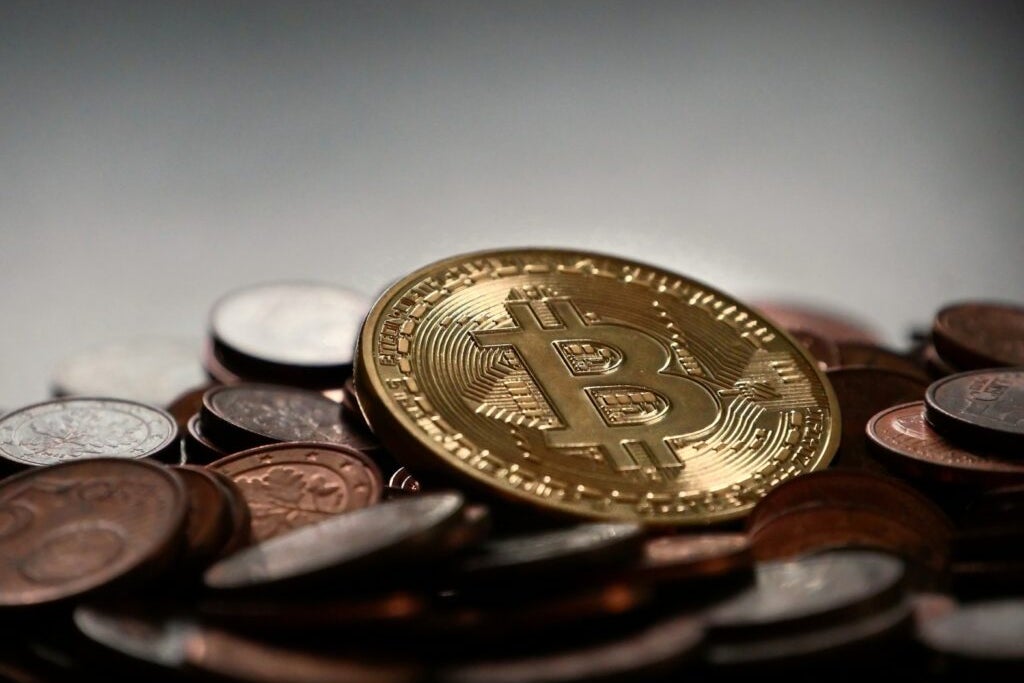Bitcoin has reached a historic milestone, surging to a staggering $100,000, a threshold many thought was years away. This meteoric rise has sent ripples through both the cryptocurrency world and the broader financial markets, attracting a range of reactions from key figures in finance. The new price point has sparked a debate over the future trajectory of the leading digital asset, its implications for global financial systems, and how investors should navigate this shifting landscape.
The Significance of Bitcoin’s $100,000 Milestone
Bitcoin’s rise to $100,000 is more than just a notable price level; it represents a profound transformation in the cryptocurrency ecosystem. Since its creation in 2009 by the pseudonymous Satoshi Nakamoto, Bitcoin has evolved from a niche technology experiment to a global financial phenomenon. It has gone from being perceived as a speculative asset to a store of value, with increasing acceptance among institutional investors, governments, and corporations.
The $100,000 milestone signifies the increasing confidence in Bitcoin as both an investment vehicle and a potential hedge against inflation. As Bitcoin continues to outperform traditional assets, the broader financial world is taking notice. The surge has come amid growing uncertainty in traditional financial markets, with concerns about inflation, government debt, and currency devaluation driving investors toward alternative assets like Bitcoin.
Reactions from Key Financial Figures
As Bitcoin reaches this unprecedented level, reactions from influential figures in the financial world are both varied and insightful. These reactions provide a window into how the cryptocurrency market is viewed through different lenses, from those who champion its potential to those who remain skeptical.
Nayib Bukele: Bitcoin as El Salvador’s Future
El Salvador’s President Nayib Bukele has been one of Bitcoin’s most vocal and committed supporters, famously making Bitcoin legal tender in his country in 2021. Bukele has consistently argued that Bitcoin offers a way for nations like El Salvador to break free from the grip of traditional financial systems and escape the economic constraints imposed by the US dollar.
In a tweet celebrating Bitcoin’s rise to $100,000, Bukele remarked, “We’ve always believed in Bitcoin’s potential. This milestone proves that our decision was not just visionary but essential for the future of El Salvador.” The country has invested heavily in Bitcoin, using its national reserve to purchase the digital asset, with Bukele positioning the country as a global leader in blockchain technology and cryptocurrency adoption.
While critics have pointed to the volatility of Bitcoin and the risks associated with its use as a national currency, Bukele’s stance continues to be one of optimism. He argues that Bitcoin provides a path to financial inclusion for the unbanked population, and its integration into the country’s economy will create new opportunities for growth and innovation.
Brian Armstrong: Optimism for the Future of Crypto
Brian Armstrong, the CEO of Coinbase, one of the largest cryptocurrency exchanges in the world, also expressed his enthusiasm about Bitcoin’s rise. Armstrong has long been a proponent of cryptocurrency as a tool for financial empowerment and decentralization, and he believes that Bitcoin’s surge is just the beginning of a larger trend.
“Bitcoin at $100,000 marks a new phase in the acceptance of cryptocurrencies,” Armstrong said in a statement. “We are witnessing a paradigm shift where digital assets are becoming a fundamental part of the global financial system.” He further emphasized the increasing institutional interest in cryptocurrencies, with many hedge funds, private equity firms, and even pension funds exploring ways to incorporate Bitcoin into their portfolios.
Armstrong’s optimistic view is aligned with the growing trend of institutional investment in Bitcoin, which has helped stabilize its price over time and foster a more mature market environment. Coinbase, under his leadership, has played a pivotal role in this transformation, providing retail and institutional investors with a secure platform to trade and hold cryptocurrencies.
Peter Schiff: A Cautious Warning
Not everyone shares the enthusiasm surrounding Bitcoin’s recent surge. Peter Schiff, a well-known gold advocate and CEO of Euro Pacific Capital, has been an outspoken critic of Bitcoin for years. Schiff argues that Bitcoin’s price rise is driven by speculative frenzy rather than fundamental value, and he remains skeptical about its long-term viability.
“Bitcoin may hit $100,000, but it will eventually come crashing down,” Schiff warned in a recent interview. He likened Bitcoin to a “bubble” that will eventually burst, echoing sentiments expressed during the early days of Bitcoin’s rise. According to Schiff, the absence of intrinsic value in Bitcoin and its reliance on speculative trading make it a risky investment, especially compared to traditional assets like gold, which he considers a more reliable store of value.
Schiff’s views highlight the persistent divide between Bitcoin advocates and traditional financial figures who view the cryptocurrency as a speculative asset with limited utility. While Schiff’s caution is rooted in his long-standing support for gold, his warning reflects broader concerns about the sustainability of Bitcoin’s growth and its volatility.
The Broader Implications of Bitcoin’s Surge
The rise of Bitcoin to $100,000 has far-reaching implications that go beyond individual investor strategies and market dynamics. Its impact on the financial landscape is multifaceted and warrants careful consideration.
Impact on Institutional Investors
Institutional investors are increasingly viewing Bitcoin as a legitimate asset class, with many recognizing its potential as a hedge against inflation and economic instability. A rising number of investment firms are adding Bitcoin to their portfolios, alongside more traditional assets like stocks and bonds. The surge in Bitcoin’s price has led to more institutional adoption, with some funds even investing in Bitcoin futures and related financial products.
However, the growing institutional presence in the market raises questions about the future dynamics of Bitcoin’s price. Some worry that institutional involvement could introduce greater market manipulation and volatility, especially if large players start making significant trades in a relatively illiquid market.
Government Regulation and Adoption
As Bitcoin reaches mainstream levels of recognition, governments around the world are grappling with how to regulate the digital currency. While countries like El Salvador have embraced Bitcoin, others have taken a more cautious approach. China, for example, has imposed a crackdown on cryptocurrency mining and trading, while the United States and the European Union are exploring regulatory frameworks for digital assets.
The rise of Bitcoin to $100,000 could accelerate regulatory efforts, with policymakers seeking to balance innovation with consumer protection. In the U.S., the Securities and Exchange Commission (SEC) has already taken steps to regulate cryptocurrency exchanges and Initial Coin Offerings (ICOs), and its role is likely to become more prominent as Bitcoin’s market cap grows.
Broader Economic and Technological Implications
Bitcoin’s increasing prominence could have significant effects on the global financial system. As a decentralized asset, Bitcoin challenges traditional banking systems and poses potential disruptions to fiat currencies. Its integration into everyday transactions, either as a store of value or as a medium of exchange, could reshape the way people think about money and financial systems.
Moreover, Bitcoin’s success could pave the way for other blockchain-based technologies, such as smart contracts and decentralized finance (DeFi) applications, to achieve wider adoption. The continued growth of the cryptocurrency market may spur innovation in financial products and services, giving rise to new decentralized financial models that could challenge the traditional banking sector.
Conclusion: What’s Next for Bitcoin?
As Bitcoin reaches $100,000, the cryptocurrency stands at a crossroads. On one hand, its price surge reflects the growing confidence in its role as an alternative asset, particularly in the face of economic uncertainty. On the other hand, challenges remain, ranging from volatility and skepticism from traditional financial experts to the need for clear regulatory frameworks.
The next few years will be crucial in determining whether Bitcoin’s price growth is sustainable or whether it will eventually face a correction. As more institutional players enter the space and as governments take a closer look at its regulation, Bitcoin’s future will likely be shaped by a combination of market forces, technological developments, and regulatory decisions.
For investors, the $100,000 milestone serves as both a sign of progress and a reminder of the risks involved in the cryptocurrency market. While Bitcoin offers a unique opportunity for diversification, it remains a highly speculative and volatile asset. As with any investment, careful consideration of one’s risk tolerance and financial goals is essential.
Bitcoin’s rise is a testament to the transformative power of technology in the financial world, and whether it becomes a stable store of value or faces further volatility, it is clear that its impact on global finance is just beginning.
For more insights on cryptocurrency trends and market analysis, visit CryptoNews.com. To learn more about Bitcoin’s potential as an investment, check out Forbes’ Latest Analysis on Bitcoin.
See more CNBC Network



